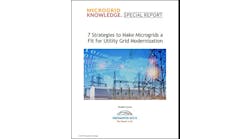A new casebook by the Rocky Mountain Institute profiles renewable microgrids on islands and remote communities across the globe. RMI’s Kaitlyn Bunker, Kate Hawley and Jesse Morris offer details.
The livelihoods of individuals and families living on islands and in remote communities across the globe are directly tied to the availability and price of one volatile global commodity: oil. For well over 100 years, oil has enabled remote communities to generate electricity and enjoy the benefits of a consistent electrical supply. However, unlike many larger, non-isolated communities that are increasingly turning to a diverse supply of resources to generate electricity, most islands and remote communities continue to rely on oil and oil alone for their electricity and other energy needs.
Relying solely on oil for electricity generation has left island and remote communities exposed to several risks and drawbacks. Oil-based electricity generation is often more expensive and subject to price volatility, which can result in the use of risky fuel-hedging strategies that can lock in prices for years to come. Importing oil puts these communities at risk of supply interruption, reducing energy security. Furthermore, small-scale electricity systems that aren’t connected to a larger electricity grid tend to be more expensive and difficult to maintain.
These risks and drawbacks—paired with continuing cost reductions in solar, wind, and energy storage technologies—suggest that an alternative to the fully oil-based electricity systems of the past is now available to islands and remote communities across the globe: affordable renewable energy.
Leading islands and remote communities, from the deserts of Australia to the isles of the UnitedKingdom, have already transitioned from 100 percent oil-based electricity systems to ones with significant renewable penetration. These communities are enjoying the many benefits that come with the transition: operational cost savings, reliable and stable power, long-term energy price stability, and reduced dependence on oil.
RMI’s new casebook, Renewable Microgrids: Profiles From Islands and Remote Communities Across the Globe, profiles 10 islands and remote communities actively embracing this transition in order to provide examples for other communities looking to make the switch away from oil to efficiency and renewables.
Among the 10 locations, the casebook identifies several similar drivers of change, including electricity costs, environmental considerations, and abundant local resources. The 10 locations also experienced similar challenges to a renewable transition, including maintaining grid stability, installing new systems in remote locations, and handling administrative and bureaucratic requirements. The full casebook publication includes additional information about each of the locations, and their transitions over time to incorporating higher amounts of energy efficiency, renewable energy, and energy storage.
Each of the 10 locations followed a different pathway to transition from oil-based to renewable microgrids, and they provide examples of how other islands and remote locations might embark on a similar transition. We identified several lessons learned in order to help guide decision making within communities currently considering such a transition:
TRANSITIONING TO RENEWABLE MICROGRIDS CAN REDUCE COSTS
Relying on more-diverse, renewably-powered microgrids led to reduced diesel use in every situation reviewed in the casebook. In some cases, reduction in purchased fuel resulted in reduced electricity prices, as well as reduced operating costs.
ADDING RENEWABLES ENHANCES MICROGRID SYSTEM RESILIENCE AND STABILITY
Microgrids with diverse resource mixes are often less prone to system failure than microgrids that rely on a single resource, since they have multiple resource options for electricity generation. In addition, when renewables are added to the grid, key components such as power electronics and control systems are added as well, enabling a more-stable grid through better controls. At the same time, relying more on local resources and less on imported oil, increases overall community resilience.
ENERGY EFFICIENCY IS AN IMPORTANT COMPONENT OF A RENEWABLE MICROGRID TRANSITION
As RMI cofounder and chief scientist Amory Lovins and others have shown for decades, the cheapest kind of clean energy is energy never used in the first place. For islands in particular (where space for renewable technologies like wind and solar is typically in short supply), energy efficiency is even more important. However, most of the cases we profiled underutilize energy efficiency, and indicate that energy efficiency should play a more prominent role in any transition plan.
ENERGY STORAGE IS A KEY COMPONENT OF LARGELY-RENEWABLE ISLAND AND REMOTE COMMUNITY MICROGRIDS
Every community profiled in this casebook has either already integrated or is currently considering integrating batteries, flywheels, or pumped hydro energy storage systems. Generally speaking, renewables like solar and wind can be integrated into diesel-based island and remote community microgrids at penetrations around 10–15 percent of annual electricity consumption without causing operational challenges. After that, demand response, load-shifting, or energy storage becomes an important component of most communities’ transition.
The diverse set of examples illustrated in the casebook demonstrates the potential for energy transitions for similar communities around the world. To learn more abouRMI Ot each of the 10 locations and a take deeper look at their transitions from oil-based to renewable microgrids, please download Renewable Microgrids: Profiles From Islands and Remote Communities Across the Globe.
This blog first appeared on RMI Outlet, the Rocky Mountain Institute’s blog. Kaitlyn Bunker and Kate Hawley are RMI senior associates and Jesse Morris is manager in the electricity and transportation practices.






